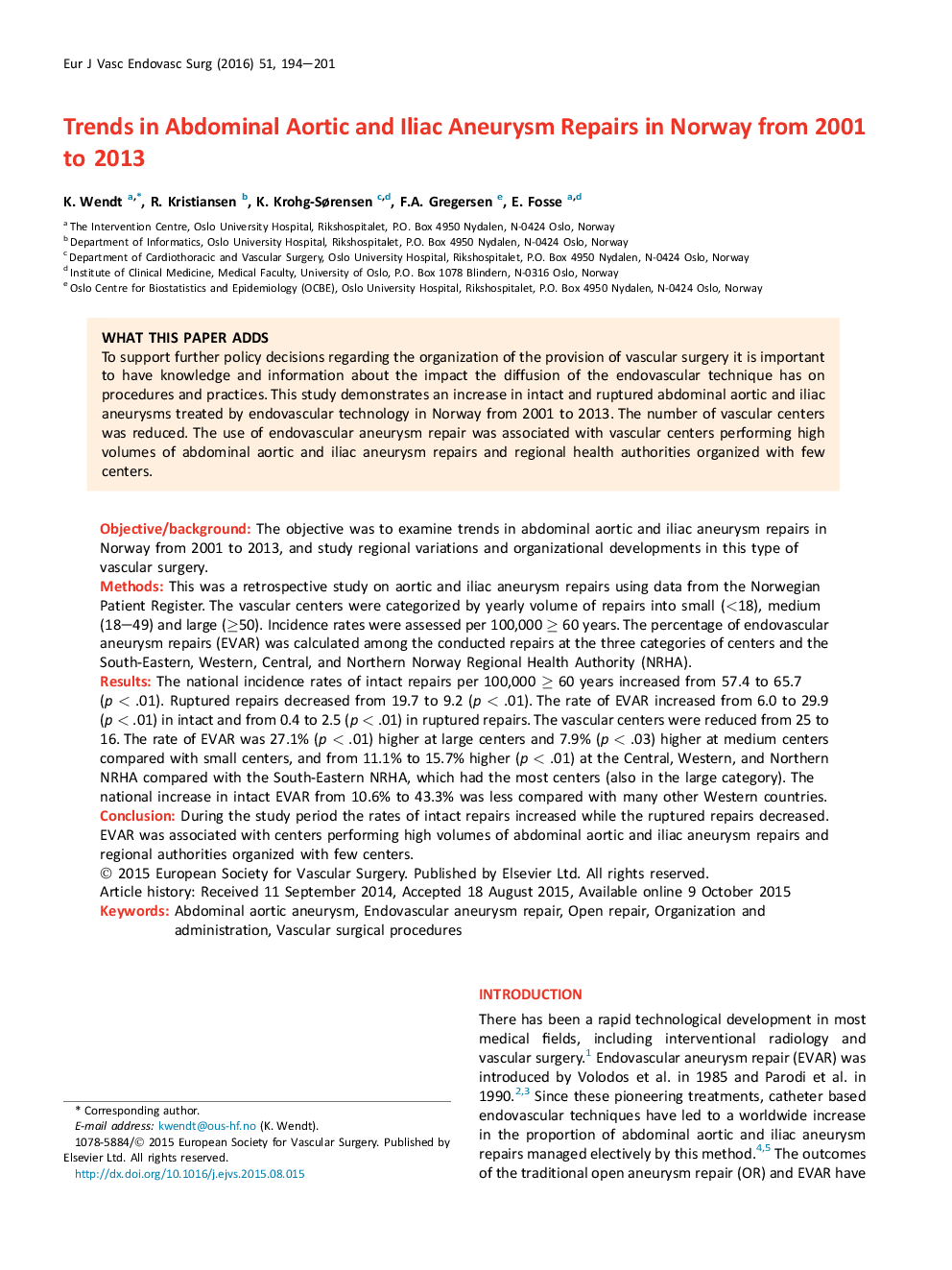| Article ID | Journal | Published Year | Pages | File Type |
|---|---|---|---|---|
| 2911709 | European Journal of Vascular and Endovascular Surgery | 2016 | 8 Pages |
Objective/backgroundThe objective was to examine trends in abdominal aortic and iliac aneurysm repairs in Norway from 2001 to 2013, and study regional variations and organizational developments in this type of vascular surgery.MethodsThis was a retrospective study on aortic and iliac aneurysm repairs using data from the Norwegian Patient Register. The vascular centers were categorized by yearly volume of repairs into small (<18), medium (18–49) and large (≥50). Incidence rates were assessed per 100,000 ≥ 60 years. The percentage of endovascular aneurysm repairs (EVAR) was calculated among the conducted repairs at the three categories of centers and the South-Eastern, Western, Central, and Northern Norway Regional Health Authority (NRHA).ResultsThe national incidence rates of intact repairs per 100,000 ≥ 60 years increased from 57.4 to 65.7 (p < .01). Ruptured repairs decreased from 19.7 to 9.2 (p < .01). The rate of EVAR increased from 6.0 to 29.9 (p < .01) in intact and from 0.4 to 2.5 (p < .01) in ruptured repairs. The vascular centers were reduced from 25 to 16. The rate of EVAR was 27.1% (p < .01) higher at large centers and 7.9% (p < .03) higher at medium centers compared with small centers, and from 11.1% to 15.7% higher (p < .01) at the Central, Western, and Northern NRHA compared with the South-Eastern NRHA, which had the most centers (also in the large category). The national increase in intact EVAR from 10.6% to 43.3% was less compared with many other Western countries.ConclusionDuring the study period the rates of intact repairs increased while the ruptured repairs decreased. EVAR was associated with centers performing high volumes of abdominal aortic and iliac aneurysm repairs and regional authorities organized with few centers.
